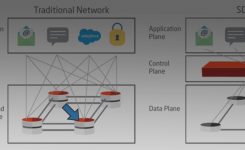Network Services
6 Reasons to Move to Fiber
The availability of fiber has exploded in the past year or so, a result of massive efforts and capital investments by all the major telecom and cable companies in a bid to replace their current network assets, which are costly to maintain and rapidly becoming outdated.
Incumbent local exchange carriers (ILECs) have been taking a beating by local cable companies offering inexpensive big-bandwidth cable solutions. As a result, these carriers, with their older and more unreliable copper network assets, are often hard-pressed to deliver comparable connectivity speeds and have decided to fight back with fiber, often waiving the large up-front construction fees that have previously made the investment in fiber cost-prohibitive.
ILECs have also established Network Peering Relationships that enable them to participate in the increasingly competitive marketplace across the country. In other words, rather than only one option for fiber in your neighborhood, there could be multiple providers able to offer the same services, thus making pricing more competitive.
Here, we’ve complied six reasons that you should discuss the switch to fiber from coax with your team and what types of businesses can benefit from this change, now.
1. Speed
Sandisk research indicates that slow internet connections cost employees one week per year in productivity. Think about that. While delays due to slow internet may seem negligible, over time, they add up. An organization shouldn’t notice Internet slow-downs during periods of high demand; similarly, Internet connections should never inhibit productivity.
Fiber-optic Internet is exponentially faster than even the highest-speed coax connection, with options ranging from 5Mbps to 100 Gbps.
2. Reliability
Fiber Internet connectivity is stronger than copper coax and therefore has significant advantages in reliability, such as negligible vulnerability to inclement weather conditions. In a coax situation, however; weather can damage or stall data transmissions via copper cabling. Additionally, unless the fibers are physically cut, fiber is resistant to human or electrical interference, and fiber Internet signals do not degrade or disappear due to electromagnetic interference.
Indisputably, unreliable Internet connections can have real costs to businesses. If a business requires a reliable Internet connection to make phone calls or access applications, reliability is an absolute necessity. For any business, really, unplanned downtime can bring operations to a screeching halt, impacting productivity and potentially revenue.
3. Bandwidth
Although fiber-optic Internet for business isn’t truly unlimited, the bandwidth availability is substantially higher than cable Internet bandwidth where it’s fairly easy to “hit the cap” on your monthly bandwidth allotment, particularly for businesses with a high need for data transmissions.
If your users habitually perform any of the following activities, a considerable amount of demand is repeatedly being placed on the company’s bandwidth:
- File sharing
- Web conferencing
- Streaming HD video
- Accessing cloud applications
- SIP trunking
Look out for the warning sings of low bandwidth availability: delays, slow speeds and pixelated video quality. If a company’s current Internet connection just isn’t cutting the mustard, they could benefit significantly from an upgrade to a fiber-optic Internet connection.
4. Latency
The delays that occur while processing data over an Internet connection are considered latency. Users can experience many delays on cable Internet, most notably when uploading or downloading video or high-definition content. Though they may not be streaming House of Cards on Netflix in their office, latency impacts a business in a variety of ways. Decreasing latency can benefit your business by:
- Improved collaboration between employees
- Upload and download large files without disruption or delays
- Move more applications to the cloud
- Improved voice quality for VoIP users
5. Security
The average cost to a business from an information security breach is $3.8 million, and companies who have protected information leaked can face stiff financial penalties and customer defection.
Unfortunately, it’s fairly easy for hackers and other nefarious cyber-criminals to gain access to sensitive information with cable Internet as a result of cable tapping or other fairly simple techniques. On the other hand, the only way to infiltrate a fiber-optic Internet is to physically cut the wires, causing the signal to vanish; therefore, a fiber Internet connection is one of the single most powerful ways to increase a company’s protection against cyber-crime.
Although the media might focus on breaches of high-profile enterprise corporations, companies of all sizes are vulnerable to attack. Numerous SMB’s lack the money and resources to invest heavily in security, and many also have an “it can’t happen to me” type of mentality. The truth is quite the opposite, though. In reality, the likelihood of an SMB experiencing a cyber-attack or data breach is over 50% (Penemon Institute, 2017).
While upgrading to fiber Internet connectivity won’t prevent all risks, it can certainly be an initial step to protect them. Like a suit of armor, the knight may still get struck with his opponent’s sword, but he’s far less likely to be hit in a vital organ.
6. Cost-Efficiency
As previously mentioned, ILEC’s are taking strides to make the transition to fiber more affordable with Network Peering Relationships as well as a willingness to, in some cases, absorb the initial construction costs, which could save thousands of dollars in up-front capital expenditure.
While still more expensive than coax, fast Internet is frequently thought of as a “productivity tool” for business—and a necessary one at that. Loss of productivity can multiply across an organization: the number of employees that a slow Internet connection impacts relative to an average of a week’s lost wages for each of them over the course of a year…suddenly an investment in fiber sounds more affordable.
Additionally, businesses can gain flexibility and scalability with fiber. As an ever-increasing number of business functions are being moved to the cloud—a fiber connection can better serve these initiatives, saving time and money.
Understanding what pain points fiber Internet can address as well as the numerous benefits that can be had is key to knowing if you are ready to make a move to fiber.








